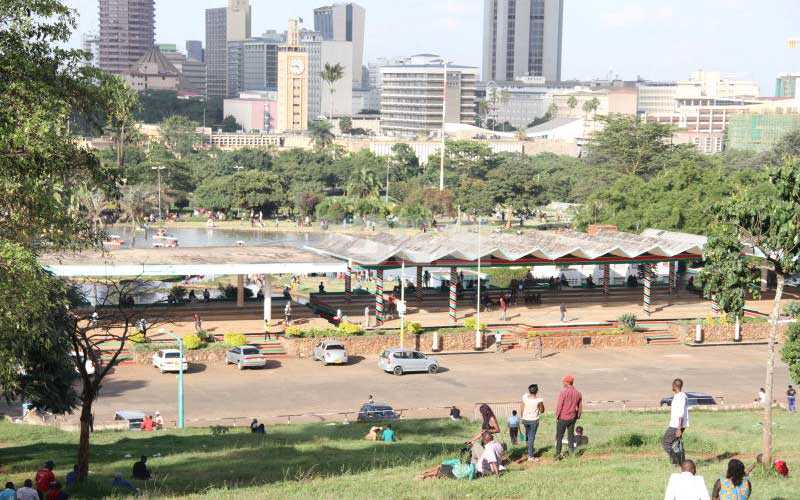
Uhuru Park and its 12 hectares are a public recreational space adjacent to the Nairobi Central Business District, but which has also been used for religious and political rallies and protests.
It has national monuments, including the ‘Peace, Love and Unity’ fountain erected during the Nyayo era; the conical slab commemorating the spot where the late Pope John Paul II celebrated the 43rd Eucharistic Congress in 1985, as well as the pond that’s popular with picnicking couples and families.
Historic moments for the park include the late environmentalist Prof Wangari Maathai staging a one-woman siege to save it from Kanu power brokers out to erect what was billed to be Africa’s tallest building at 60 stories and which could have housed the party’s headquarters in 1989.
The Nobel laureate, labelled a ‘wayward woman’ for her stand on saving the park, was at it again during the agitation for multi-party politics when she turned one spot into the present day ‘Freedom Corner,’ where mothers of political prisoners clamoured for the release of their sons by the Kanu regime.
But it was also at Uhuru Park where retired President Mwai Kibaki was inaugurated in 2002 and where he also promulgated the 2010 Constitution. The park is also where Wangari Mathai’s State funeral was held in honour of her standing for ‘ecology of public space as being democratic space.’
On the other side of Kenyatta Avenue opposite of Uhuru Park is Central Park, whose most iconic symbol is the Nyayo monument erected to celebrate 25 years of independence and 10 years of Nyayo era in 1988.
While these parks became popular public places after independence with Uhuru Park being officially opened to the public by Mzee Jomo Kenyatta on May 29, 1969, their master plan was laid out by the colonial government after World War II in 1948.
But did you know that both Uhuru and Central Parks were symbols of colonial rule and leisure?

Well, before Kenya’s independence in 1963, racial segregation was the order of the day and the parks were out of bounds for miros who were barred from extending beyond River Road, Nairobi.
Colonial buildings, including the parks, demonstrated “power and hegemony” for the ruling class. But for Africans, they evoked feelings of “oppression, violence and authority,” as Prof Maurice Amutabi tells us in Buildings as Symbols and Metaphors of Colonial Hegemony: Interrogating Colonial Buildings and Architecture in Kenya’s Urban Spaces published in 2012.
In his study, Amutabi highlights that government buildings such as the Nairobi Government House (now the Nairobi State House) “were supposed to radiate the strength and power of empire, helping institute the ideas of law, order and government,” hence its location on Nairobi Hill, from where it gave “vistas across the city below.”
In social circles, the location and proximity of All Saints Cathedral (for white Anglicans), Holy Family Basilica (for the white Catholics) and St Andrew’s Church (for white Presbyterians) around the Uhuru and Central Parks, was not by accident. It was by design. These fall in what was considered a privileged area where Africans were not allowed to access, thanks to the kipande decree. In the colonial era, these churches were a preserve for the whites who, “after a church service would freely stroll to the park for Sunday afternoon picnics away from the gaze of Africans.”
This explains the presence of other churches around the parks, including St Paul’s, Church of Latter Day Saints, the Lutheran Church and the Central SDA Church up Valley Road.
 The Standard Group Plc is a multi-media organization with investments in media
platforms spanning newspaper print
operations, television, radio broadcasting, digital and online services. The
Standard Group is recognized as a
leading multi-media house in Kenya with a key influence in matters of national and
international interest.
The Standard Group Plc is a multi-media organization with investments in media
platforms spanning newspaper print
operations, television, radio broadcasting, digital and online services. The
Standard Group is recognized as a
leading multi-media house in Kenya with a key influence in matters of national and
international interest.
